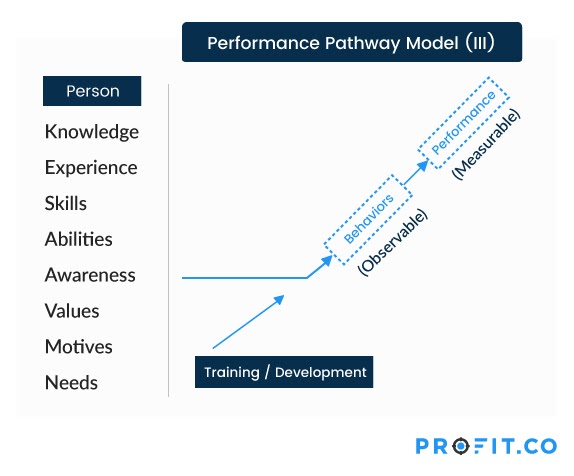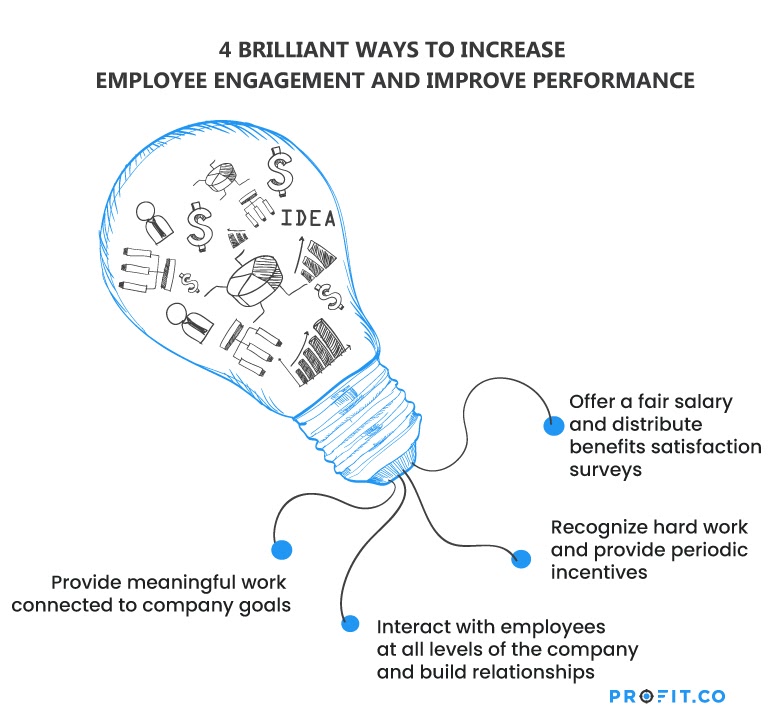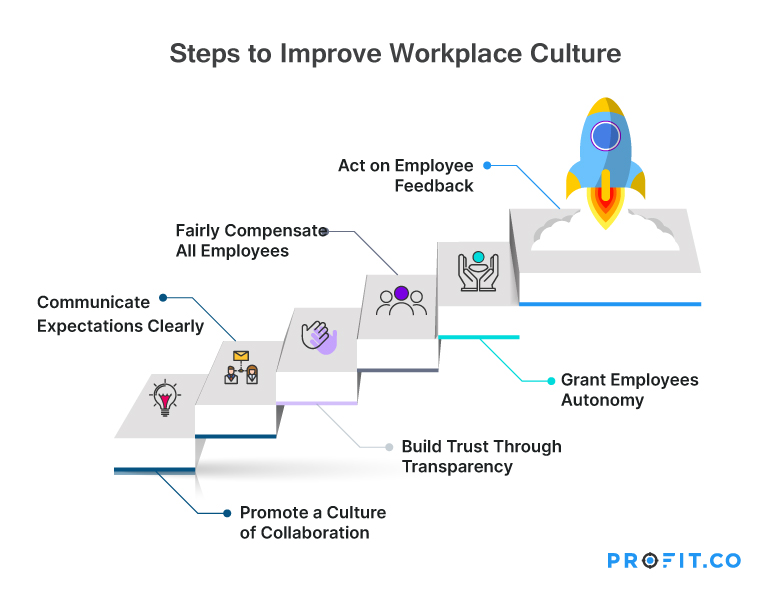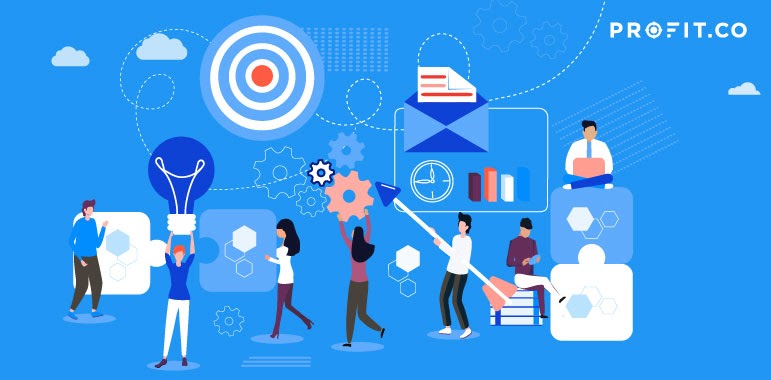Employees can make or break an organization. Your HR team has probably painstakingly invested time and resources into recruiting the best talent. It isn’t unreasonable, therefore, for them to expect that these highly qualified men and women will continuously contribute to the organization’s lasting success.
Here’s the ugly truth. Skills and experience don’t guarantee stellar employee performance. Workplace culture and employee engagement are critical to sustaining a high level of employee performance.
A disengaged employee will only exert the bare minimum amount of effort required to complete assigned responsibilities. Furthermore, the combination of beliefs, values and rituals which comprise workplace culture affect employee engagement and ultimately employee performance.
What is Employee Engagement?
Dr. Anne Marrelli defines employee engagement as “a high level of motivation to perform well at work, combined with passion for the work and a feeling of personal connection to the team and organization. Engaged employees and managers invest their best efforts in their work every day to ensure the success of their teams and organization.” In fact, Gallup indicates that organizations with a highly engaged workforce can increase profitability by up to 21 percent.
Employee engagement and Behavioral Economics tend to go hand in hand. Behavioural economics has provided companies with fool-proof ways to avoid unnecessary sick leaves, improve productivity, and boost overall progress. You can read more about the interplay between employee engagement and behavioural economics here.
What is Workplace Culture?
Dr.Pragya Agarwal defines workplace culture as “the shared values, belief systems, attitudes and the set of assumptions that people in a workplace share.” An organization’s leadership plays a significant role in how workplace culture develops. As Dr. Agarwal states, “a positive workplace culture improves teamwork, raises morale, increases productivity and efficiency, and enhances retention of the workforce.” In fact, research shows that at least 24% of employees are more likely to leave their jobs if they don’t like the workplace culture.
How Do Both Employee Engagement and Workplace Culture Impact Employee Performance?
The answer lies in Frederick Herzberg’s motivation-hygiene theory. Employee engagement is a critical component of the motivation aspect of this theory while workplace culture is integral to the hygiene component.
Motivation depends heavily on how the employee’s job is structured, how the employee is recognised and the possible growth opportunities within the organization so that the employee is encouraged to work harder. All three factors form the framework of effective employee engagement. Contrastingly, hygiene factors relate to work conditions, company policies, professional relationships within the organization and how employees are compensated – important factors to consider when trying to create a strong and positive workplace culture.
According to Herzberg’s theory, an employee won’t perform optimally without the basic requirements of workplace hygiene (the right workplace culture). A positive workplace culture is essentially the basic requirement for taking employee performance to the next level. However, the right workplace culture should then lead to a robust employee engagement strategy.
Therefore, it would be foolhardy to discuss strategies for improving employee performance without discussing both employee engagement and workplace culture. They are like cards stacked on top of each other; hygiene factors form the foundation needed to build a successful employee engagement strategy.
How Does Continuous Training and Development Boost Both Employee Engagement and Workplace Culture?
Dr. Tom E. Jones describes a performance pathway model that connects training and development with improved job performance. This performance pathway model helps form the premise of a strong argument for incorporating continuous training and development into the development of employee engagement initiatives and positive work culture.
This model has four components:
- The Person
- Training and Development
- Behaviors
- Performance

The Person
Successful training and development initiatives begin with a fundamental understanding of:
- Who each employee is
- The current skills and knowledge each employee possesses
- How the employee’s values align with the organization’s values
- The learning gaps that need to be filled for both personal and professional development
Additionally, each employee’s job performance is impacted by eight factors: knowledge, experience, skills, abilities, awareness, values, motives, and needs. A strong training and development program should begin with an analysis of these eight factors for each employee so that the training solution provided is actually beneficial to both the individual and the organization.
Go as far as you can see; when you get there, you’ll be able to see futher.
The person should be motivated to believe that by constantly improving, new horizons will open and scope for further improvement will emerge from thereon.
Training and Development
Training is moreso a short-term solution for addressing immediate needs. Contrastingly, development relates to long-term growth and harnessing each employee’s potential. Studies have shown that focusing on both training and development can significantly increase employee engagement and productivity. Furthermore, developmental programs are particularly important for the development of a strong workplace culture.
Behaviors
After training and development programmes are implemented, organization leaders should observe employee behavior to determine whether employees are accepting or rejecting the change required for organizational success. It’s particularly important to get feedback from employees about these training and development initiatives. However, their feedback should be analyzed in the context of the organization’s overall culture.
Performance
These behaviors impact employee performance. As a result, an analysis of each employee’s changed behavior leads to further training and development initiatives to help underachievers improve and take high achievers to the next level. The performance pathway model is a never-ending cycle that continuously feeds positive employee engagement and a strong workplace culture.
4 Ways to Improve Employee Engagement
Motivation forms the core of many strategies used to improve employee engagement. There are several factors that impact employee motivation. Here are a few:

A Fair Salary
We’ll discuss this further in the next section of this article. However, it’s important to note that paying an employee less than an acceptable market-rate often leads to dissatisfaction. Going to work seems pointless to the employee since the salary earned doesn’t meet fair expectations. On the flip side, salary increases only provide motivation for short periods of time and, therefore, shouldn’t be used as a long-term solution.
Employees want to know that what they do for the organization is noticed and valued. Recognition can be as simple as praising someone for a job well done or as big as offering a tangible good as positive reinforcement. It’s important for managers to recognize and reward both the small and big contributions their team members make.
Good Relationship With Leaders and Peers
Few people thrive in a hostile work environment. Employees want to develop healthy, positive relationships with their leaders and colleagues. Strong leaders will develop this culture by:
- Taking the time to get to know their team members and be genuinely concerned about their growth and development
- Addressing interpersonal conflicts before they get out of control
- Providing constructive feedback to their team members
- Holding themselves and team members accountable
- Providing opportunities for employees to spend time together in a relaxed environment
Provide Meaningful Work
Employees want to know that their work is enriching their own lives and the lives of others. They want to know that their leaders understand how to use each team member’s skills, experiences, background, and personalities to provide value-added products or services. It’s important for employees to find true purpose in the work they do.
How Can Workplace Culture Be Improved?
Remember that employee engagement and workplace culture work in tandem. Employee engagement provides motivation while positive workplace culture helps provide the right workplace hygiene based on Herzberg’s motivation-hygiene theory.
Therefore, it’s important to discuss effective strategies for improving workplace culture.

Act on Employee Feedback
Workplace culture can’t improve if the organization’s leaders aren’t clear about the issues that exist with the culture. Therefore, employee feedback is necessary and should be given regularly. Once received, it’s the leader’s responsibility to use the insights gleaned to improve the culture. Employees should feel that their voices are being heard and their contributions are valued.
Fairly Compensate Employees Company-Wide
It’s easy for employees to resent an organization where they feel they are overworked and underpaid. While it is true that there is more to job satisfaction than great pay, compensation is still an important consideration. Sure, salaries and bonuses eat away at a company’s bottom-line, but providing fair compensation across the board helps build an equitable work culture. It also helps develop the motivation employees need to give their best performance. For instance, employees should be compensated based on the value they bring to their jobs instead of their gender; a woman shouldn’t be paid less than a man who is performing the same job.
Communicate Clearly
Employees should be able to freely communicate with their leaders and vice versa. There should be a culture of openness, growth and constructive feedback. Additionally, employees should clearly understand what is expected of them and how the work they do supports the organization’s mission and values.
Here are four strategies you can use to improve communication:
- Make it easy for employees to find the information they need
- Provide consistent feedback on job performance – give kudos for a job well done and provide mentorship where support is needed to improve performance
- Streamline the flow of communication within the organization so that it isn’t haphazard
- Build positive work relationships
Build a Culture of Collaboration
It’s great to hire people who are at the top of their fields and have the requisite experience to take an organization to the next level. However, how do their skills and experience translate into building a strong team? How do the top players support their teams so that everyone can learn, grow and thrive?
Collaboration. That’s the simplest answer to those burning questions. An individualistic culture where it’s every man or woman for himself or herself won’t build a positive work environment. Teams should regularly collaborate in ways that allow each team member to make a valuable contribution to the organisation’s success. That’s how employees learn and gradually improve their performance.
Build Trust Through Transparency
Darren Perucci aptly described the link between transparency and employee engagement. He said, “workplace transparency helps set the stage for employee recognition and satisfaction, two key ingredients of employee engagement.” That element of employee satisfaction is fundamental to developing a positive work environment. In fact, 79% of American workers believe workplace culture is important for job satisfaction.
Here are two ways you can build transparency in your organization:
- Openly share and recognize the successes of individuals and teams within the organization
- Be open about the challenges the organization is facing and allow employees to provide feedback about possible solutions
Give Employees the Autonomy They Need
Managers know that a lot rests on their shoulders. One small slip up and their jobs could be at risk. This can lead to them becoming micromanagers who heavily scrutinize the work of their team members and remove their autonomy.
Managers should understand how to work with their teams to ensure that mistakes are either minimal or non-existent. They should avoid being micromanagers and trust their team members to successfully do what is required. The best managers mentor and lead their teams so that these teams can function at the top of their game even when the manager isn’t around.
Why Use Employee Engagement Software?
Employee engagement software uses a combination of survey, task management, gamification, and data analytics tools to give managers insight into how they can improve employee engagement. Profit.co’s employee engagement module has a bunch of relevant features such as awards, Pulse surveys feature.
Pulse surveys are used to measure the engagement of employees and its customers while monitoring improvements using feedback from them on a regular basis. Profit’s simple, user-friendly, and highly customizable interface helps organizations to conduct surveys and collect feedback effectively.
The survey can be
- Anonymous
- Non-anonymous (employees only and requires sign-in)
Superusers can enable pulse surveys from settings and HR administrators can initiate surveys
Employee engagement software is important for five main reasons which are detailed below.
Employees feel a greater sense of belonging
Employee engagement softwares have user portals for both employees and managers. Depending on the software, employees can interact with each other by:
- Giving kudos to their peers for jobs well done
- Using the social networking element of the software to collaborate and share ideas
- Helping each other better understand how their KPIs align with organizational objectives
Points can be attributed to various interactions within the software and these points can then be used to determine the rewards and recognition each employee receives.
Managers Are Better Able to Measure Employee Engagement
Assessments of employee engagement can seem arbitrary without concrete evidence to support the claims made. Employee engagement software addresses this challenge by allowing managers to generate reports and perform data analytics so they can make informed decisions.
Easier to Create (and Implement) an Intervention Strategy
Armed with sufficient data, managers can pinpoint the employees who are least engaged and the likely reasons for this lack of engagement. These managers can then create and implement intervention strategies to increase these employee’s engagement. Continuous intervention in this manner increases the chances of improved performance since employees will receive timely feedback rather than hear about issues with their engagement at performance review meetings.
Onboarding Process Is Easier
New recruits need support to quickly acclimatize to their new work environments. Employee engagement software makes the onboarding process a tad bit easier since new recruits are able to give and receive feedback quickly, understand how their responsibilities align with the organization’s values, and easily communicate with colleagues so that they can build good work relationships. This is great for improving the productivity of new recruits since productivity increases by at least 20% in organizations with connected employees.
Recognition Is a Priority
Employee engagement software makes employee recognition a central focus. This is particularly important since research shows that “the lack of recognition and engagement is driving 44% of employees to switch jobs.” Employee engagement software bridges the gap between accurately measuring employee and engagement and providing appropriate recognition for that engagement.
Employee Engagement and Profit.co
Profit.co understands that employee engagement is one of the most crucial elements to the success of any company achieving its vision and goals. Profit.co firmly believes that often employees can get jaded or distracted if an organization does not engage their employees effectively and regularly.
With Profit.co’s OKR cloud-based tool, you can enable your employees to be engaged and measure their work and give great visibility on each individual’s contribution to the organization’s long-term goals. OKR helps employees understand the purpose of corporate goals and how impactful it can be when everyone in your team commits to using this goal-setting system. Employees will stay focused on day-to-day tasks and are recognized for their contributions.
Profit.co’s Engagement Module allows managers to easily and effectively engage with their employees in their day-to-day workflow. Profit.co’s News feed, let’s you know everything you need to know, highlighting the OKRs created, check-ins made, created and assigned tasks, and more.
The virtual award system enables you to award employees, which in turn, motivates them to do more, and to achieve the expected results in a focused and structured manner.-With Awards, employees are assigned a certain amount of points in a given quarter to distribute to their peers
If a project is completed, or an employee does an outstanding job on a task or presentation, their peers can send them some of their points. This keeps employees in contact with one another, and also allows for managers to recognize employee work.
Point totals are monitored on an Awards Leaderboard, which can motivate employees who are, for example, in fifth or sixth place to increase their performance and their output quality to gain more points.
HR Administrators or designated employees can initiate Pulse Surveys. This allows for managers or HR Administrators to “take the pulse” of the company with a quick employee satisfaction or engagement survey.
With all of these Profit.co’s features, your employee feels heard and recognized, and can also alert a manager to any problems occurring in their team.
You can also check out this Interesting article on The IKEA Effect and OKR: Boosting Employee engagement.
Final Thoughts
Your organization will only thrive if your employees are consistently performing at their best. The key to ensuring that this happens is to strike the right balance between employee engagement and a positive workplace culture. You can’t have one without the other.
Training and development should be done continuously so that employees can feel as though the organization cares about their growth. This inevitably results in increased engagement and a better company culture is training and development programmes focus on addressing each employee’s training and growth needs and how these needs fit into the overall needs of the organization.
However, the process of improving employee performance doesn’t stop there. Your organization should invest in employee engagement software and use it to track employee engagement. The metrics this software provides will help managers make data-driven decisions for improving employee engagement.
Finally, improved employee engagement should be supported by a positive workplace culture. Such culture can be developed through:
- Acting on employee feedback
- Fair compensation
- Clear,consistent communication
- Collaboration
- Transparency
- Employee autonomy
It’s time for you to see a significant improvement in employee performance through increased employee engagement and positive work culture.
@media (max-width: 768px){.blogpages .formula-sec.fltnon{display:inline-block !important;float:left !importamt;width:100%;}.post-content-view-sec .blogpages .formula-sec .tbl-sec .tbl-cell{display: table-cell!important;float: none!important;vertical-align: middle;width: auto!important;word-break: break-word!important;}}

